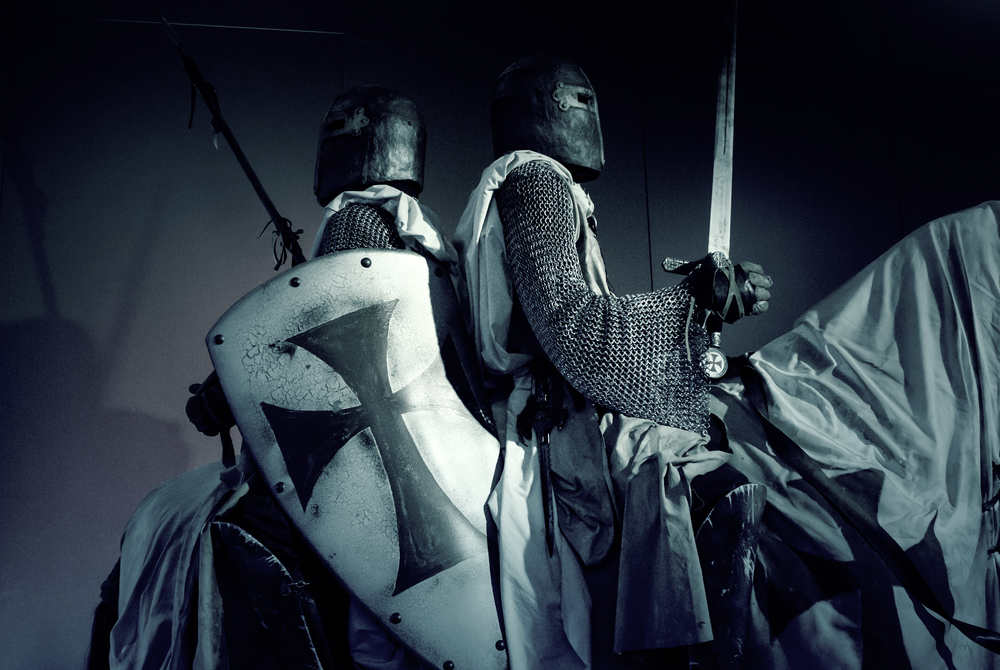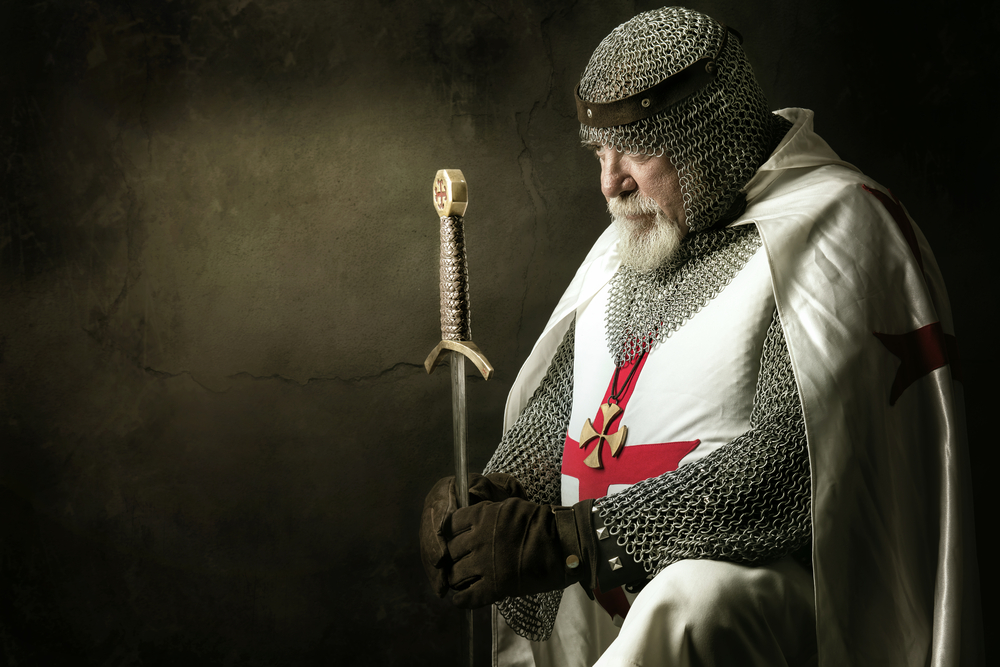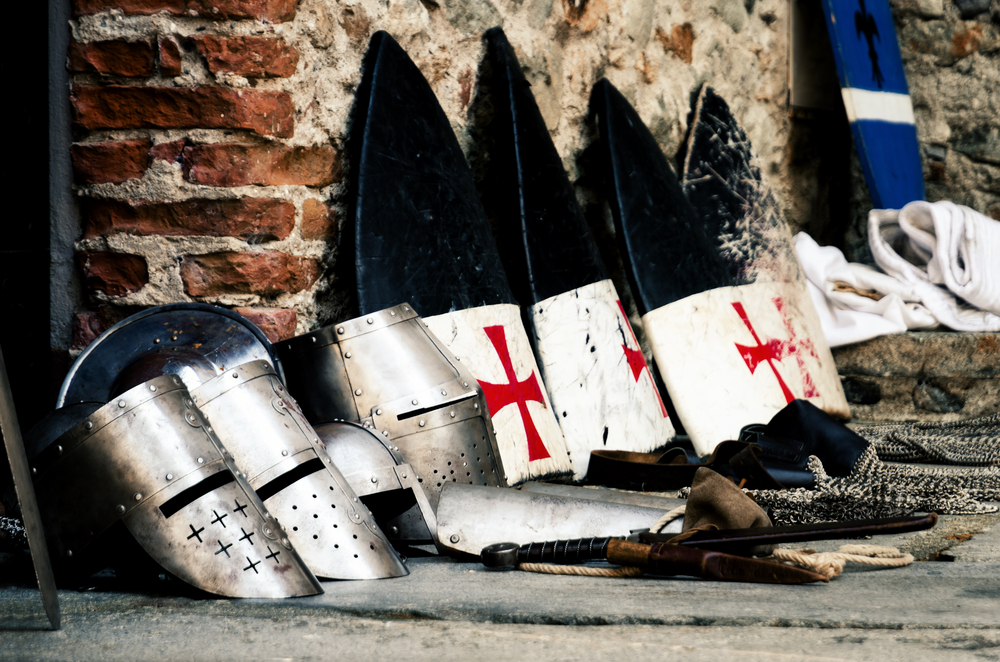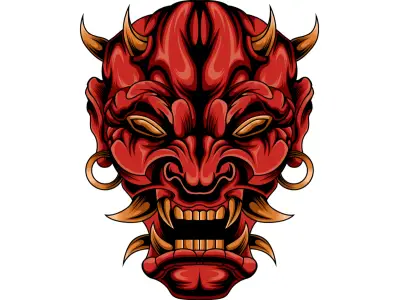The Knights Templar has fascinated historians, scholars, and enthusiasts for centuries. Their legendary tales blend historical fact and mythical lore, making them a subject of curiosity and study.
If you've ever wondered about the real story behind the Knights Templar, their rise to prominence, their downfall, and their legacy that continues to intrigue the world today, you're in for an enlightening journey. Let's explore the fascinating world of the Templar knights, Templar churches, and their indelible mark on history.
Jump to:
Who Were the Knights Templar?

Founded in the early 12th century, the Knights Templar began as a monastic military order dedicated to protecting Christian pilgrims travelling to the Holy Land. Their foundation was based on ideals of poverty, chastity, and obedience, yet they rose to become one of the wealthiest and most powerful orders in Christendom.
What did the Knights Templar do?
Initially founded to protect pilgrims on their journey to the Holy Land, the Templars' scope of activities expanded remarkably over the years.
Protecting Pilgrims
At the heart of the Templar mission was protecting Christians travelling to the Holy Land. In a time when such journeys were fraught with danger, the Templar knights offered a shield against banditry and political unrest, ensuring that pilgrims could undertake their spiritual journey with greater security.
Crusading Warriors
The Templars participated in the Crusades, the far-reaching military campaigns aimed at reclaiming the Holy Land from Muslim control. As fierce warriors, they were instrumental in many key battles, earning a reputation for their discipline and military prowess. This aspect of their duties is the most widely recognised, showcasing their dedication to the broader Christian cause in the Holy Land.
Pioneers of Banking
Beyond the battlefield, the Knights Templar were innovators in finance, effectively creating an early form of banking that revolutionised the way money and goods were exchanged. Pilgrims and merchants could deposit funds in one location and withdraw them in another, a system that provided security for their assets and facilitated trade and travel across medieval Europe and the Near East. This contributed significantly to the Templars' wealth and influence, allowing them to fund their military and charitable activities.
Landowners and Builders
The Templars were also gifted landowners and builders. They managed vast estates across Europe and the Middle East, from which they drew the resources necessary to support their order. The construction of Templar churches, castles, and commanderies was an architectural marvel of their time. These buildings served as administrative centres, military barracks, and places of worship, further embedding the Templars into the fabric of medieval society.
Educators and Diplomats
Though less known, the Templars also contributed to education and diplomacy. They maintained a network of scholars within their commanderies, promoting the study of theology, history, and the military arts. Their diplomatic efforts were essential for negotiating truces and alliances, often serving as peacekeepers among conflicting Christian and Muslim leaders.
Understanding Templar Beliefs and Practices

The Templars were devout Christians, adhering to a strict code of conduct that included vows of poverty, chastity, and obedience. The Templar Oath, a solemn vow to uphold the order's ideals, was a declaration of their commitment. Templar knights were expected to lead lives of discipline, and while they were warriors, their ethos was rooted in their faith and service to God.
The Fall of the Knights Templar
Despite their contributions to Christendom and their initial mission of protection, the Templars became victims of their own success.
Accusations and Arrests
The decline began with a series of accusations ranging from heresy and idolatry to corruption and blasphemy. These charges, largely unfounded and politically motivated, marked the beginning of their persecution. On Friday, 13 October 1307, King Philip IV of France, deeply indebted to the Templars and jealous of their wealth, ordered the arrest of Templars across his kingdom. This day would later contribute to the myth of Friday the 13th as unlucky.
Papal Pressure and Dissolution
The persecution quickly spread beyond France's borders, fueled by royal jealousy, papal intrigue, and the Templars' secrecy and success. Under pressure from King Philip and eager to maintain the unity of Christendom under his authority, Pope Clement V eventually disbanded the order in 1312. The papal decree Vox in excelso dissolved the Knights Templar, and their assets were largely transferred to the Knights Hospitaller, another military order.
The Legacy and Mysteries of the Templars
The Knights Templar has left an indelible mark on history, weaving a rich tapestry of myth, legend, and factual legacy that continues to captivate people around the globe.
The Quest for the Holy Grail
One of the most enduring legends associated with the Templars is their supposed guardianship of the Holy Grail. This mythical artefact, said to be the cup from which Jesus drank at the Last Supper or that caught his blood at the crucifixion, has been the subject of countless stories, books, and films. The Templars' close association with the Crusades and the Holy Land provides a fertile ground for speculation about their involvement with such sacred relics.
Freemasons and the Templar Tradition
The supposed connection between the Freemasons and the Knights Templar adds another layer to the Templars' mystique. Some Masonic rites include references to Templar symbols and traditions, leading to theories that the Freemasons are the spiritual successors of the Templars. While historical evidence for a direct connection is lacking, the idea that the Templars' ideals and knowledge were passed down through secret societies is a compelling narrative that continues to fascinate.
Enduring Influence in Popular Culture
The Knights Templar influenced popular culture; their story was adapted and reimagined in novels, films, video games, and television shows. This cultural footprint reflects the universal appeal of the Templars' story, with its elements of mystery, power, betrayal, and the quest for spiritual and temporal riches. The Templars embody the archetypal struggle between light and darkness, knowledge and ignorance, making them perennially compelling characters in the story of humanity.
Modern Templar Organisations
While the historical Knights Templar were disbanded over 700 years ago, their legacy inspires numerous modern organisations. Groups ranging from charitable foundations to fraternal orders adopt the Templar name and symbols, drawing inspiration from the Templars' ideals of brotherhood, faith, and service. These organisations, while not direct descendants of the medieval order, seek to uphold the values associated with the Templars, engaging in charitable works, historic preservation, and promoting spiritual and moral values.
The Templars and Their Contribution to History

The Templars' impact on medieval society was profound. They were pioneers in banking, established a network of fortresses and commanderies across Europe and the Holy Land, and were among the most disciplined fighting forces of the Crusades. Their architectural legacy, including Templar churches and castles, continues to be studied and admired.
Frequently Asked Questions About the Knights Templar
Are Knights Templar and Freemasons the Same?
While there are historical connections between the Knights Templar and the Freemasons, and certain Masonic orders bear the Templar name, they are distinct entities with different origins and purposes.
Why are the Knights Templar so popular?
The popularity of the Knights Templar can be attributed to their fascinating history, the mysteries surrounding their order, and their portrayal in literature, film, and video games. From being guardians of sacred relics to being depicted as villains or heroes, the Templars' legacy continues to captivate the imagination.
What is the Motto of the Knights Templar?
The motto of the Knights Templar, "Non Nobis Domine, Non Nobis, Sed Nomini Tuo Da Gloriam," translates to "Not unto us, O Lord, not unto us, but to your name give glory." This humble invocation reflects their dedication to divine service and the Christian ideals they strove to embody, despite their martial prowess and considerable wealth.
Were Templars Celibate?
The Knights Templar were expected to take vows of celibacy, along with vows of poverty and obedience. This requirement aligned with their monastic lifestyle and commitment to the order. The vow of celibacy was meant to ensure that Templars remained focused on their spiritual and military duties without the distractions or obligations of family life.
Why Were the Knights Templar So Feared?
The Knights Templar were feared for several reasons. Their military skills made them formidable opponents in battle, often tipping the scales in the Crusades. Additionally, their extensive wealth and the secretive nature of their order's rites and ceremonies bred suspicion and envy among secular and religious leaders. This combination of power, wealth, and mystery made the Templars a target for fear and persecution.
Did the Knights Templar Protect the Holy Grail?
While popular culture often depicts the Templars as guardians of the Holy Grail, no historical evidence supports this claim. The association between the Templars and the Grail likely stems from their role in the Crusades and the myths and legends that have grown around their order in the centuries since their dissolution.
Why is Friday 13th Unlucky Knights Templar?
The belief that Friday the 13th is unlucky is partly attributed to the arrest of the Knights Templar on Friday, October 13, 1307. King Philip IV of France ordered the arrest of the Templars, marking the beginning of the order's downfall. This event has been linked to the superstition surrounding Friday the 13th as a day of bad luck.
What Does the Knights Templar Logo Mean?
The Knights Templar logo typically features two knights riding a single horse, symbolising the Templars' vows of poverty and their early status as a poor and humble order serving the Christian pilgrimage routes. The logo also often includes a red cross on a white background, representing their dedication to Christian ideals and martyrdom.
What Church Was Built by the Templars?
The Templar order was responsible for the construction of many churches, but one of the most famous is the Templar Church in London, known as the Temple Church. Built in the late 12th century, it is renowned for its circular nave, designed to echo the Church of the Holy Sepulchre in Jerusalem, and served as the English headquarters of the Templars.
Can Knights Templar Marry?
In historical terms, Knights Templars were not allowed to marry due to their vow of celibacy. This was a standard expectation for members of monastic military orders, who were expected to dedicate themselves entirely to their religious and martial duties without the distractions of family life.
What is the Highest Rank in the Knights Templar?
The highest rank within the Knights Templar was that of the Grand Master. The Grand Master was the supreme leader of the order, responsible for its overall strategy, governance, and the welfare of its members. This position required a deep commitment to the Templar ideals and a life of service to the Christian cause.
What is the Templar Oath?
The Templar Oath was a solemn vow taken by members of the order, committing them to live according to the Templars' strict codes of conduct. This included vows of poverty, chastity, obedience, and to fight the enemies of Christendom. The oath encapsulated the spiritual and martial ethos of the Templar order, binding the knights in a brotherhood of faith and duty.
What is a Knights Templar Flag?
The Knights Templar flag, known as the Beauseant, was a distinct banner that featured a black and white design. The black section symbolised the Templars' readiness to avenge the wrongs done to the Holy Land, while the white symbolised their purity and commitment to Christian ideals. This flag was carried into battle as a rallying point for the Templars.
Recommended for you!
Best SellersExplore the Mysteries of the Knights Templar with Centre of Excellence
Learn more about the Knights Templar with our Knights Templar Diploma Course, designed to unravel the secrets of their enduring legacy.
Why Centre of Excellence?
- Accessibility: We're committed to making transformative education accessible to everyone. This commitment is why we offer our courses at prices that promote inclusivity.
- Flexibility: Our courses are crafted to fit into your life seamlessly, allowing you to learn at your own pace and on your own schedule. Whether you're exploring a passion or seeking to advance your knowledge, our platform is designed with your needs in mind.
- Diverse Curriculum: From the origins and missions of the Templar knights to their downfall and lasting legacy, our Knights Templar course covers a broad spectrum of topics. This range ensures a comprehensive understanding of their historical impact and cultural significance.
- Supportive Community: Enrolling in our course grants you access to dedicated tutor support and an engaging community of fellow learners. This network provides encouragement, insight, and support throughout your educational journey.
Special Invitation
We're excited to offer you an exclusive opportunity to join our Knights Templar Diploma Course at the special promotional price of £29, offering a significant saving of over £100!












